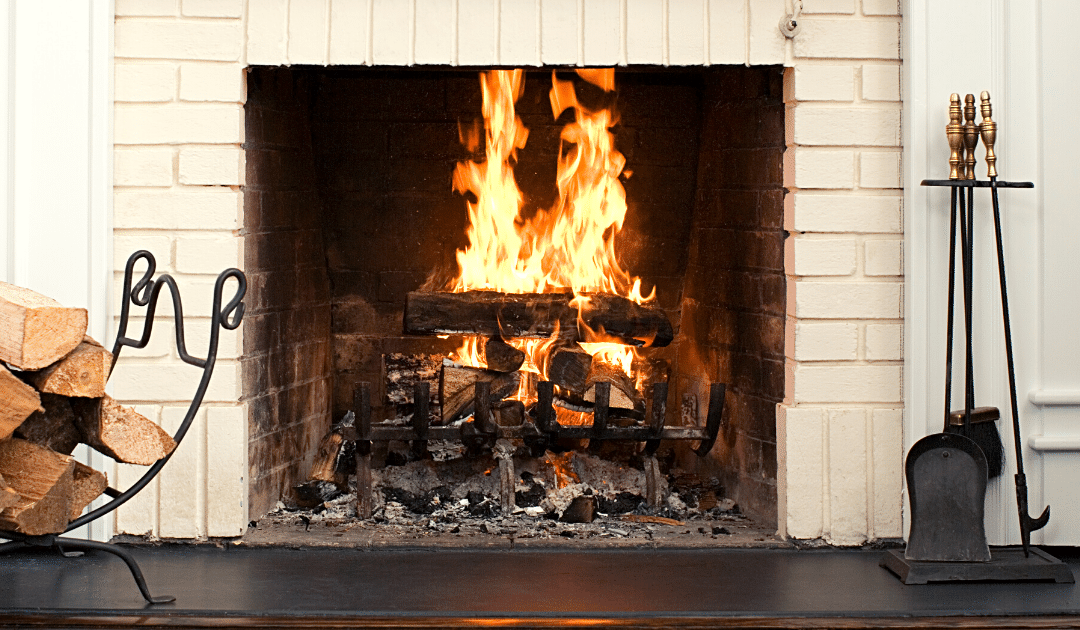Nothing says cold weather coziness like a warm, glowing fire in the fireplace. While indoor fires keep us warm and provide comfort, they can also pose hazards.
Follow these tips to keep your fireplace and chimney in safe working order.
Maintain, Clean & Inspect
-
- Check your alarms – Before you light your first fire of the season, make sure your carbon monoxide and smoke detectors are working properly. For the former, use the “test” button on the unit; for the latter, see our testing and safety tips here.
- Get an annual inspection – Hire a certified chimney inspector to closely inspect your chimney, fireplace, and/or woodburning stove, clean them and let you know about any needed repairs.
- Keep it clean – Keep the hearth free of debris, decorations, and other flammable materials. Be sure to remove ashes after every fire – excess ash in the fireplace can reduce airflow for the next fire, which leads to more smoke.
- Be careful with ash – When cleaning ashes, remember that they can stay hot for a long time – give them plenty of time to cool. When cooled, put them in a covered metal container and wet them down. Put the container outside and let sit for three days before disposing of it.
Burn Safely
-
- Use a screen – Fireplace screens are metal accessories designed to prevent flying sparks and embers from starting a house fire. Always use one when burning a fire.
- Consider fireplace doors – Slightly different from screens, glass fireplace doors are meant to help your fire burn better and produce more heat. They should be fully open when starting a fire and when the fire is burning strongly. After the fire dies down a bit, close the doors completely to minimize the amount of air going up the chimney.
- Know your damper – Dampers are often confused with flues. The flue is the tube inside the chimney through which the smoke escapes. The damper is the device inside the flue that you can open or close. When starting a fire and while it’s burning, make sure the damper is open. When your fireplace is not in use close the damper to prevent warm air from escaping.
- Make sure the fire’s really out – Never leave a fire unattended. Before going to bed or leaving the house, make sure it’s had plenty of time to die down and that it’s fully extinguished.
- Be smart about what you burn – Only burn dry, seasoned wood, and kindling in your fireplace. Do not burn plastic, cardboard boxes, wrapping paper or trash, some of which can emit toxins into your home. And never burn your Christmas tree, as burning needles can easily send sparks spraying
Practice Fire Safety from the Outside In
-
- Observe the 30-foot rule – That’s how far firewood should be stacked away from your home.
- Install a chimney cap – This prevents snow, rain, and other moisture from entering your chimney and keeps out animals that may try to nest inside.
- Prune branches – Make sure you’ve pruned any branches that are close to your chimney.
- Remove dry debris – Your roof and chimney should be clear of pine needles, leaves, and other flammable debris.
For additional tips and an easy-to-print infographic on Chimney Safety click here.
The sooner you know that your fireplace and chimney are in tip-top shape, the sooner you and your family can enjoy evening fires, board games, hot chocolate, and all the rest that make winter so cozy.
This article is furnished by California Casualty. We specialize in providing auto and home insurance to educators, law enforcement officers, firefighters, and nurses. Get a quote at 1.866.704.8614 or www.calcas.com.
- Graduation – When to Remove Your Child from Your Auto Policy - May 18, 2023
- How to Prevent Catalytic Converter Theft - May 17, 2023
- How Much Does Home Insurance Cost? - May 17, 2023

